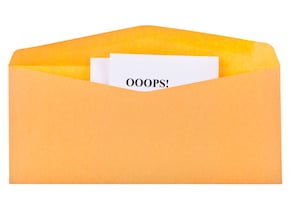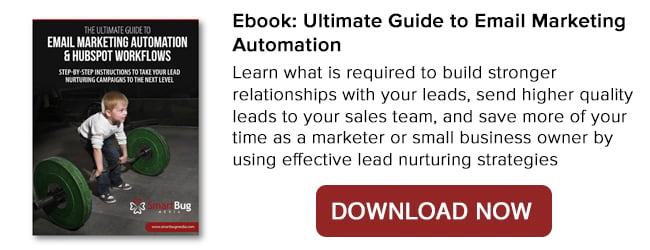 I think we all can agree that there’s good email marketing and then there’s bad email marketing. By now we are trained to recognize the signs of bad email campaigns, from confusing subject lines, to missing calls-to-action and irrelevant or boring messaging.
I think we all can agree that there’s good email marketing and then there’s bad email marketing. By now we are trained to recognize the signs of bad email campaigns, from confusing subject lines, to missing calls-to-action and irrelevant or boring messaging.
While your email campaigns may not be bad, most email marketing programs out there can do a better job of engaging and converting customers. To help move the email performance meter closer to “good,” and even beyond into “great,” let’s take a look at the four most common email mistakes that marketers make.
1) Poorly Managed Reader Expectations
Many marketers make the mistake of managing recipient expectations, resulting in low click-through rates and high unsubscribe rates. From initial email signup, through to the delivery of a message, readers should know what to expect as far as the frequency, content, and purpose of your emails.
The first step is to make what is being received obvious from the get go. You can be explicit right on the signup page by adding a few words to explain what future messages will contain, i.e. industry news, product updates, tips, or offers and discounts. Set expectations about email frequency by including the email timing or schedule right in the name of your program.
For example, your subscribe call-to-action might say “Subscribe to Our Weekly Deals Newsletter.” If you can, give recipients an option to update their preferences and limit email frequency without unsubscribing altogether.
The second step is to ensure the subject line of your email matches what is actually in the content body of your email. A lot of marketers think the bait-and-switch method is a good strategy because the open rates of an email with a catchy subject line tend to increase. However, this attempt to increase the ever faulty open rate statistic is in vain.
Undoubtedly click through rates (the statistic that actually matters) will decrease and unsubscribe rates (the most feared statistic) will increase. You’re better off stating exactly what the offer is in the subject line in a catchy way.
2) Overuse (or Underuse) of Personalization
One Marketing Sherpa case study showed that personalized email subject lines returned a 17.36 percent higher than average click through rate. Yet, many marketers under utilize personalization. If you have the data, then it’s best to personalize the email greeting in most messages.
You can also realize higher click through rates by testing first name and full name personalization in your subject lines. If your email recipient has recently downloaded a piece of content, then personalize the message by thanking them and sharing a reminder link to that content.
Avoid over-personalization by leaving un-vetted, user-generated data out of your emails. For example, information collected in a single lead generation form may be inaccurate and turn the customer off when repeated in an email.
You don’t want to start out an email relationship by calling someone a wrong or made-up name! Remember that if a piece of personalized data does not directly correlate to a future step in your lead nurturing or sales process, then it’s best to leave it out.
3) Lack of List Segmentation
Today we have tons of customer data that can be used to slice and dice email lists and send out more targeted messaging. So why are some marketers still keeping email separate from other channels and sending generic or mass emails to every name on their list? A recent MailChimp Study found that segmented lists resulted in a 14.4 percent higher open rate and 14.9 percent higher click rate than non-segmented email lists. Marketers who ignore or do not fully leverage email segmentation may be sacrificing potential revenue.
Segmenting by buyer personas is the best way to ensure email relevancy and results. Craft a subject line, imagery, and offer that will strike an emotional chord with each persona. For example, if your persona is a family-oriented man in his 40s, then a strong subject line may include language about “protecting your family’s future.”
You can also segment your list by where people are in the lead or sales process. Include calls-to-action and content offerings tailored to nurture your relationship with a recipient. If someone has just signed up for a free trial, then your email might ask how that trial is going and provide resources should they have any questions or need help.
4) Infrequent Testing
What if you sent an email that triggered optimism and inspiration rather than focusing on the customer’s pain points? Would this type of messaging increase open rates, clicks, and conversions? When it comes to email, you won’t know if something is going to work, or how well it will work, unless you test it. View every email you send out as an opportunity to learn more about the messaging and offers that succeed with your audience.
Keep your email program healthy and growing by testing often. Test one variable at a time, such as the “from” address, subject line, creative, offer, message timing, or call-to-action. Don’t just limit the test to email messaging alone. You can also test further down the funnel by sending part of your email list to a new landing page upon click through. With a third of marketers reporting that their email lists are stagnant or shrinking in size, now is the time to set expectations, personalize, segment, and test.
What is your plan for improving email results?


